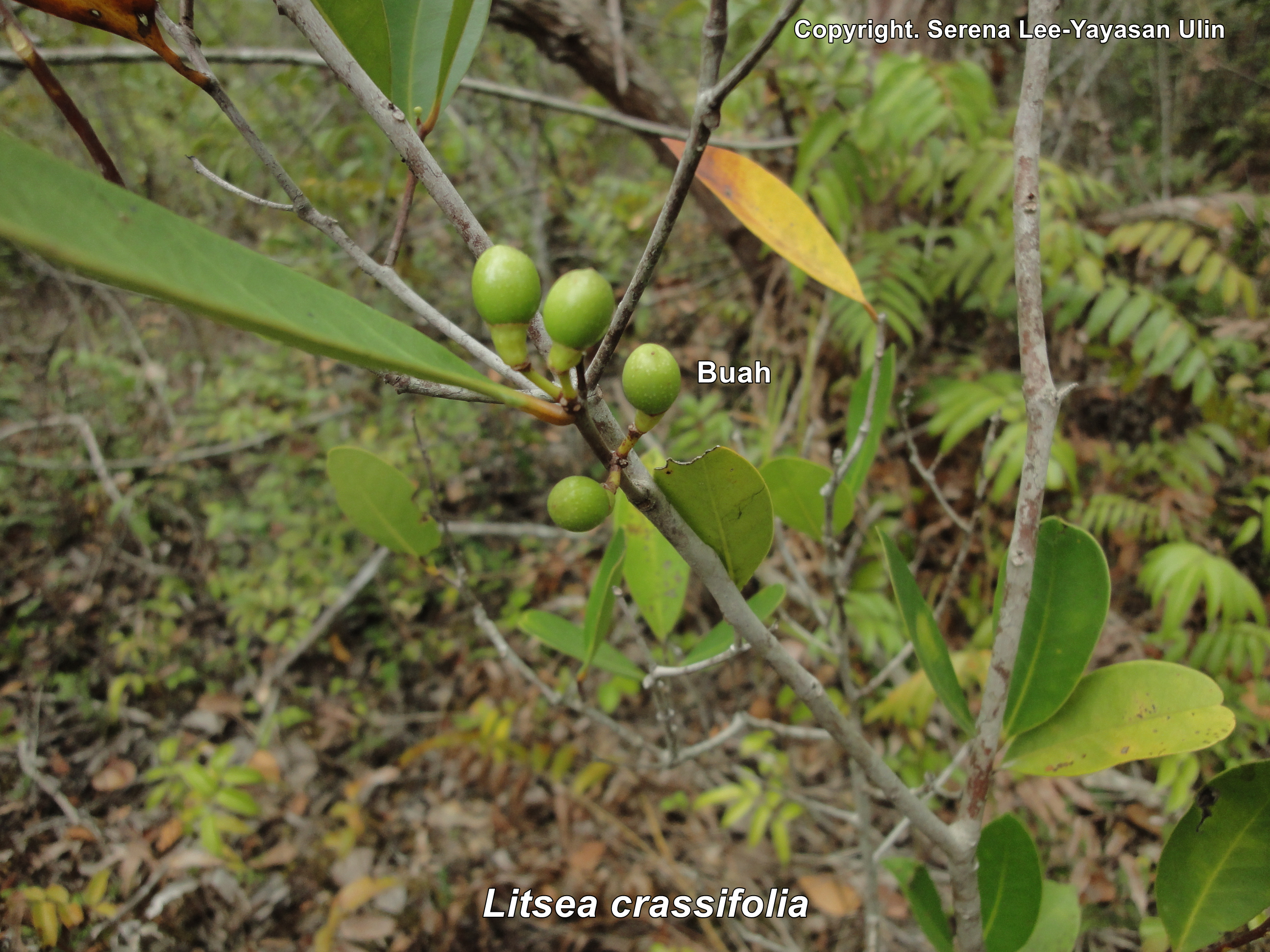Litsea crassifolia
(Blume) Boerl.
Lauraceae
Nama : Medang.
Deskripsi : Pohon, berukuran kecil sampai sedang, tinggi mencapai ca. 7 m, kulit batang kecoklatan. Daun tunggal, berseling dalam pusaran semu; tangkai pendek ca. 2 cm; jorong-melonjong, sampai membundar telur; pangkal menirus atau membaji; ujung daun meruncing; tepi daun mengutuh; pertulangan daun menyirip. Perbungaan tandan-sedikit membonggol atau memayung. Bunga biseksual, mengumpul pada tandan, padat; kelamin bunga tidak teramati. Buah pelok, bulat sampai bulat telur; hijau sampai kemerahan saat matang.
Ekologi : Persebaran endemik Pulau Kalimantan. Pada umumnya tumbuh di hutan lahan basah Mesangat dan lahab basah Suwi. Referensi: L.3910290!; L.1805660! (digital spesimen).
Kegunaan : –

